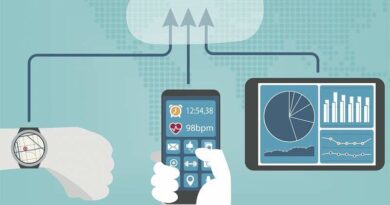Leveraging innovative health technology solutions to combat social determinants of health
By Kris R. Bhambhani, MPA, Chief IT Operations Officer, Columbia University Irving Medical Center
Nearly every chronic health condition has an increased prevalence with declining income; in fact, the life expectancy of the wealthiest American is ten to fifteen years longer than that of the poorest. Health disparities negatively affect people who experience larger obstacles to achieving optimal health due to lack of access to care. Healthcare systems face many challenges; chronic illnesses such as stroke, arthritis, and heart disease, which are most prevalent in the vulnerable patient populations most affected by health disparities, strain the system. Innovative health technology has the potential to reduce disparities in healthcare and promote health equity.
One of the primary ways in which health information technology eliminates health disparities is via mechanisms that facilitate information sharing. Health information technology can be utilized to standardize and collect data, report clinical quality measures, and provide meaningful insights into comprehensive information to public health agencies, which can then be turned into action to enhance clinical care and improve population health.
Telehealth utilization has increased exponentially due to the Covid-19 pandemic; its widespread implementation has served to keep patients and the healthcare workforce as safe as is possible during this pivotal time.
Electronic Medical Records (EMRs) are advantageous for exchanging patient medical information between facilities to simplify care coordination and lead to better health outcomes. Additionally, utilization of electronic medical record platforms can lead to population health benefits by facilitating standardized terminology and methods of categorization used to document social determinants of health, thereby improving patient safety, and maximizing access, comprehensiveness, and quality of care while providing a complete picture of overall health statuses. Clinical decision support tools embedded in electronic medical record tools can promote compliance with the standard of care guidelines and may improve the quality of care for underserved patient populations, thereby reducingg healthcare disparities and adverse health outcomes.
Healthcare providers can access actionable real-time patient data via EMR tools from anywhere in the world, provided they have access to a stable internet connection. Patient portals integrated with electronic medical records increase provider-patient communication and promote patient engagement, strengthening provider-patient relationships. This increases the likelihood of patient adherence to clinical recommendations and better health outcomes. Healthcare coordination is much less challenging with the use of an electronic medical record, contributing to increased quality and safety, particularly benefitting patients with highly complex medical conditions in settings that primarily serve disparity populations disproportionately afflicted with chronic illnesses.
Access to local healthcare specialists can be prohibitive for many patients; health information technology can reduce health disparities by increasing access to clinical care. The convenience of telehealth facilitates improved access to specialist expertise – particularly for patients with a lack of transportation or in rural areas with limited availability of primary care, dental, and mental healthcare providers, where the nearest healthcare facility may be hours away. The utilization of telehealth reduces appointment no-show rates leading to better health outcomes, especially for underserved populations whose no-show rates are higher, which interferes with the provision of quality care.
Telehealth utilization has increased exponentially due to the Covid-19 pandemic; its widespread implementation has served to keep patients and the healthcare workforce as safe as is possible during this pivotal time. The availability of telehealth has been instrumental in the fight to prevent the spread of the virus within the healthcare setting while facilitating care, and enabling critically ill patients to see their loved ones – in some circumstances to say goodbye for the last time. Additionally, telehealth allows for improvements in communication between healthcare providers and their patients and can facilitate access to interpreters during consultations with those who have limited English proficiency.
The deficiency of available data on the attributes of certain populations has been a long-standing obstacle to documenting health disparities. Artificial intelligence is capable of analyzing large datasets to identify patterns with the aim of connecting seemingly unrelated phenomena to reveal simpler, more understandable trends by using mechanisms such as machine learning to uncover inherent groupings in data, or seeking out associations to describe large portions of data. This is advantageous as aggregated clinical data from patient registries can be mined to identify trending gaps in care, and opportunities for investigators to initiate research studies focused on characteristics of underserved populations. Expanded awareness gleaned from these studies could potentially be used to provide health promoting resources in communities where they are not currently available and implement custom-made health interventions designed to target groups most affected by health disparities. One famous example of this was the successful barbershop intervention implemented in Los Angeles aimed at the blood pressure reduction of African American men, who have an increased risk of hypertension compared to men from other racial and ethnic groups.
Web-connected medical devices such as phone apps and wearables can assist in and educate patients on chronic disease management using monitoring, analytics, and coaching functionalities to promote medication adherence as well as lead to changes in behavior, resulting in better health outcomes. Mobile applications can inform patients of the lowest available pricing for prescriptions, increasing the likelihood of medication adherence. Artificial intelligence is also used in the healthcare setting to track disease, as well as pinpoint, and mitigate risks. Leveraging increased standardization of healthcare data collection, health disparities can be more easily identified and addressed.
Innovative health technology can be powerful in combating social determinants of health; however, solution accessibility and usability need to be further evaluated optimized to improve adoption, measure overall efficacy, and contribute to an equitable care framework for all.



